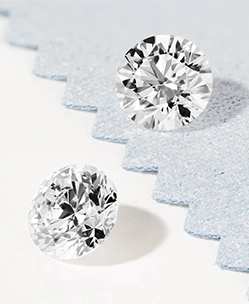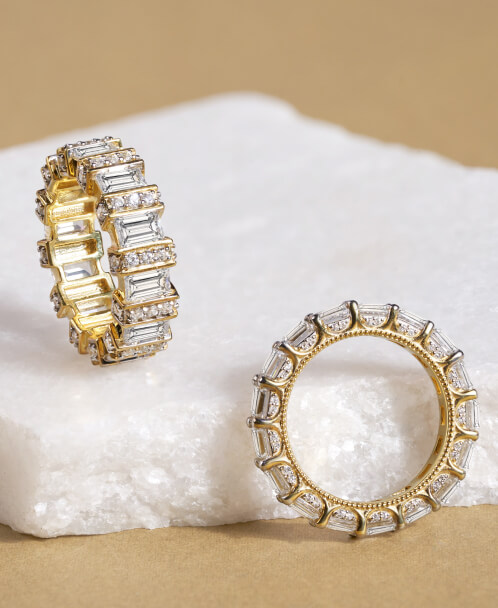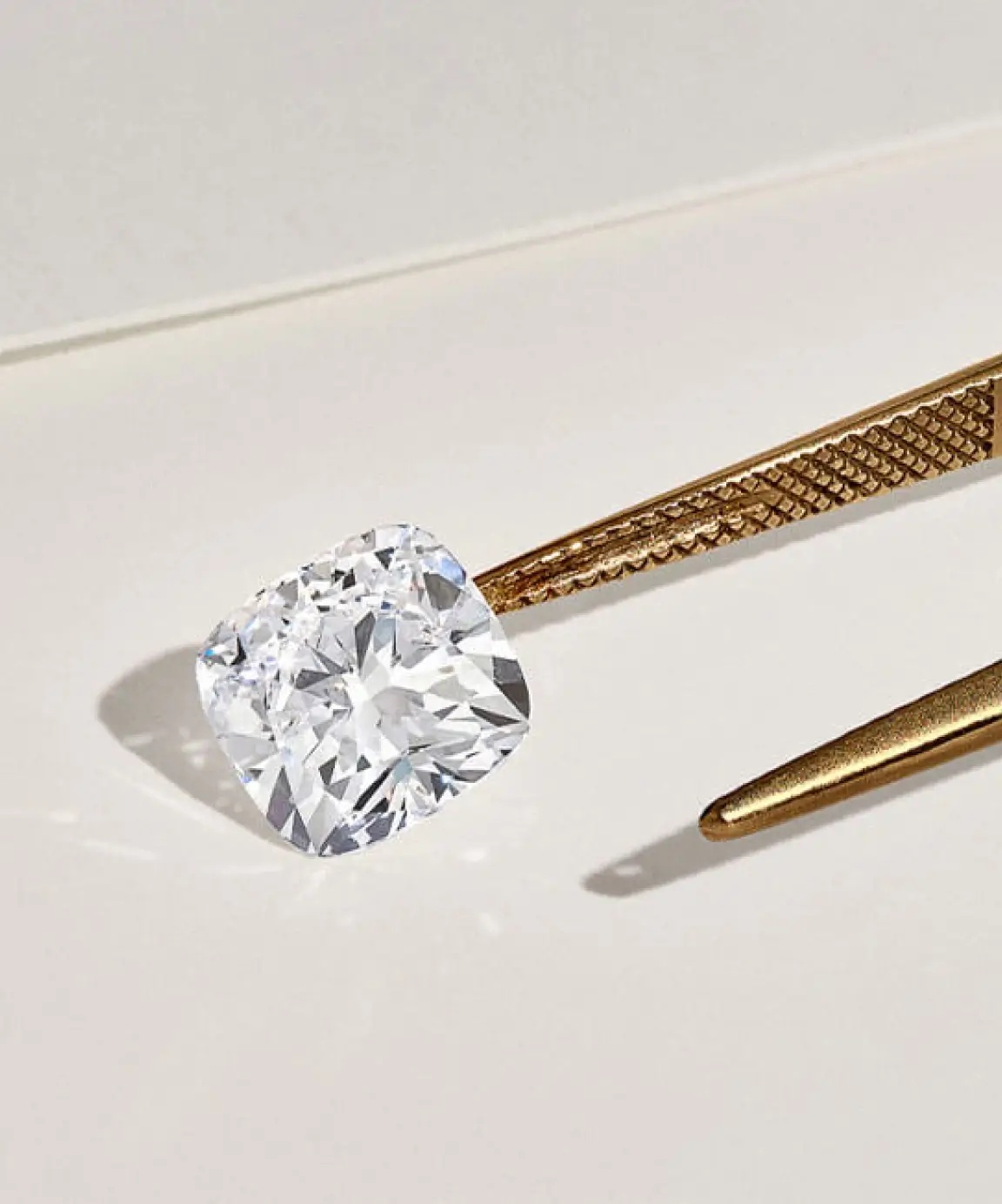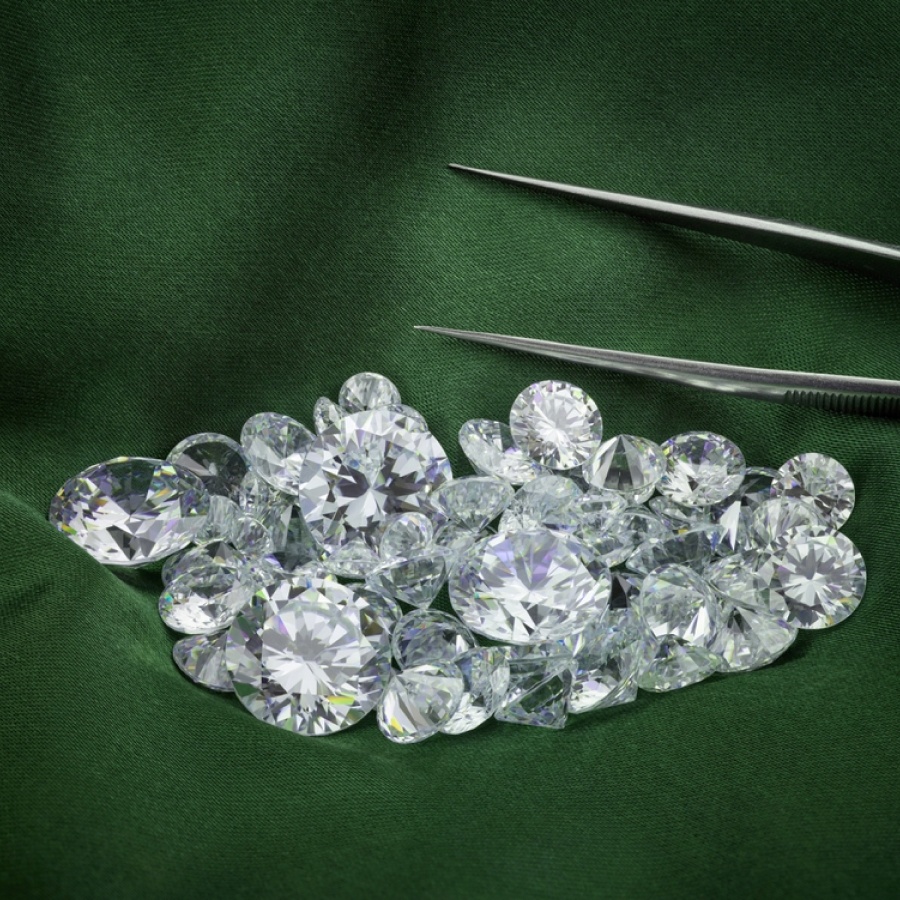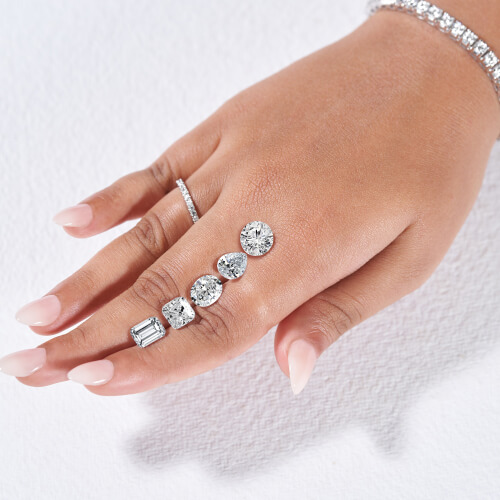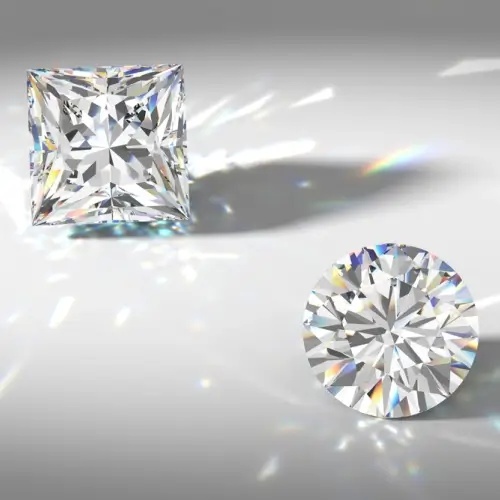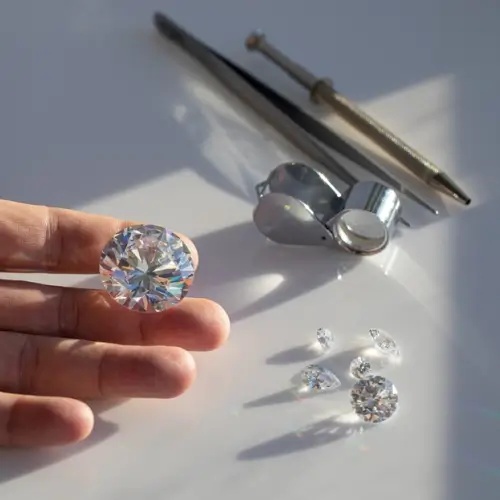Back in the day, before the 1940s, there wasn’t a standard procedure to grade diamonds on the market. If you walked inside a jewelry store back then, looking for a diamond ring or other diamond jewelry, you’d hear vague terms used to describe the quality of the gemstone. Jewelers used such terms as there weren’t any guidelines when it came to grading the stones.
Robert M. Shipley, the founder of the Gemological Institute of America (GIA), spotted this problem and set out to revolutionize the diamond industry. He crafted a mnemonic known as the 4 C’s at his institute and set a benchmark that continues to be an industry standard to date. The 4 C’s guide jewelers in assessing the quality of natural diamonds. Eco-friendly diamonds created in a lab by applying heat and pressure to carbon atoms also undergo a 4 C check.
TABLE OF CONTENT
So What Are the 4 C’s?
Why is it important to know about them before being set on engagement rings and wedding bands? And why should you pay attention to it when buying a lab diamond? These are the questions we answer in this blog so you obtain the best of what diamonds have as an offering.
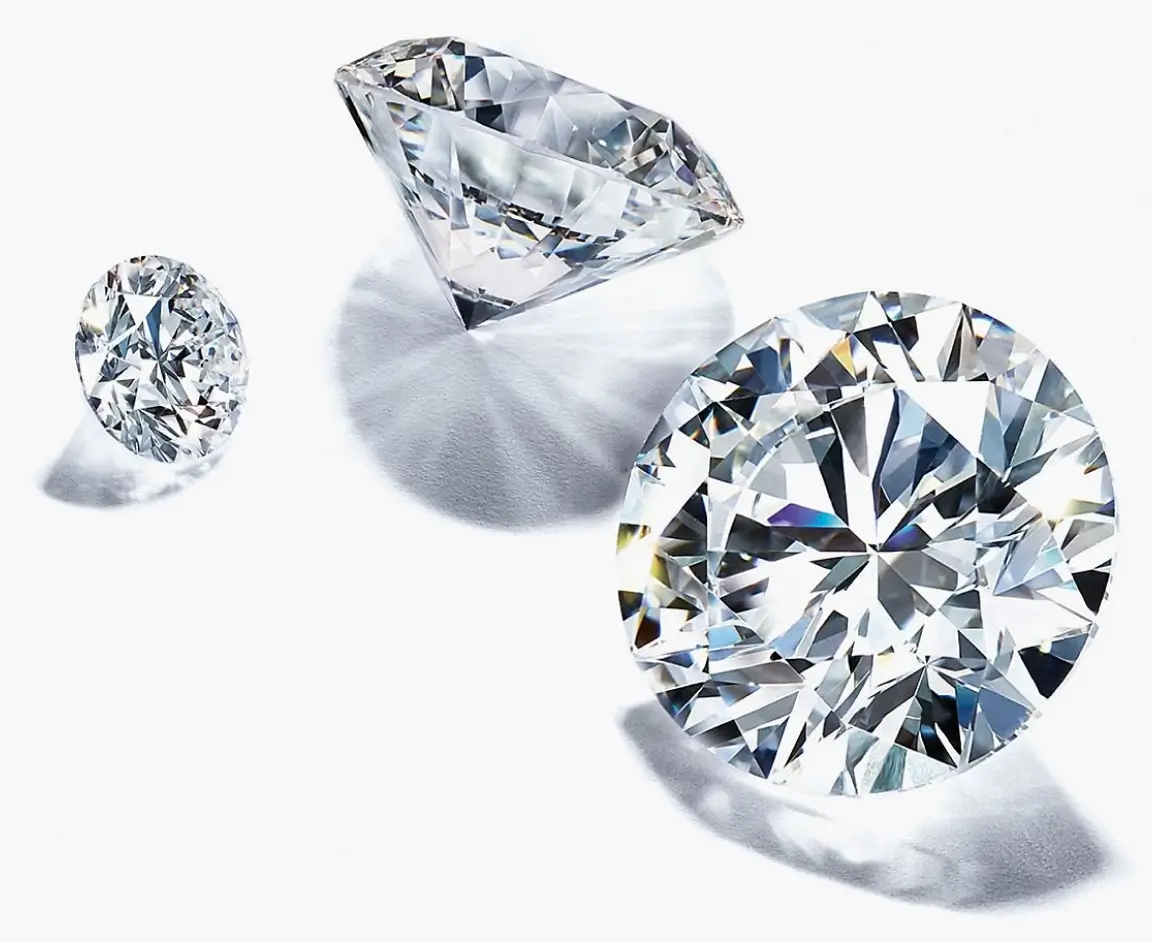
SHOP LAB DIAMONDS
The 4 C’s of Diamond
Cut
The first C stands for the cut. Quality diamonds must have the perfect cut to reveal the overall beauty of the stone. The diamond cut impacts the all-embracing look of a natural or man-made diamond. It also denotes the proportion, symmetry, and polish of the gem.
A rough diamond should be faceted to interact with light. Each facet, the flat surface of the stone, is cut in a specific manner so that the stone interacts well with light. When light rays hit a diamond, they should break and reflect at different angles to create a distinctive sparkle. To achieve this goal, a diamond crafter must cut a rough diamond accordingly to give it proportion and symmetry. He/she/they must then polish the facets for maximum shine.
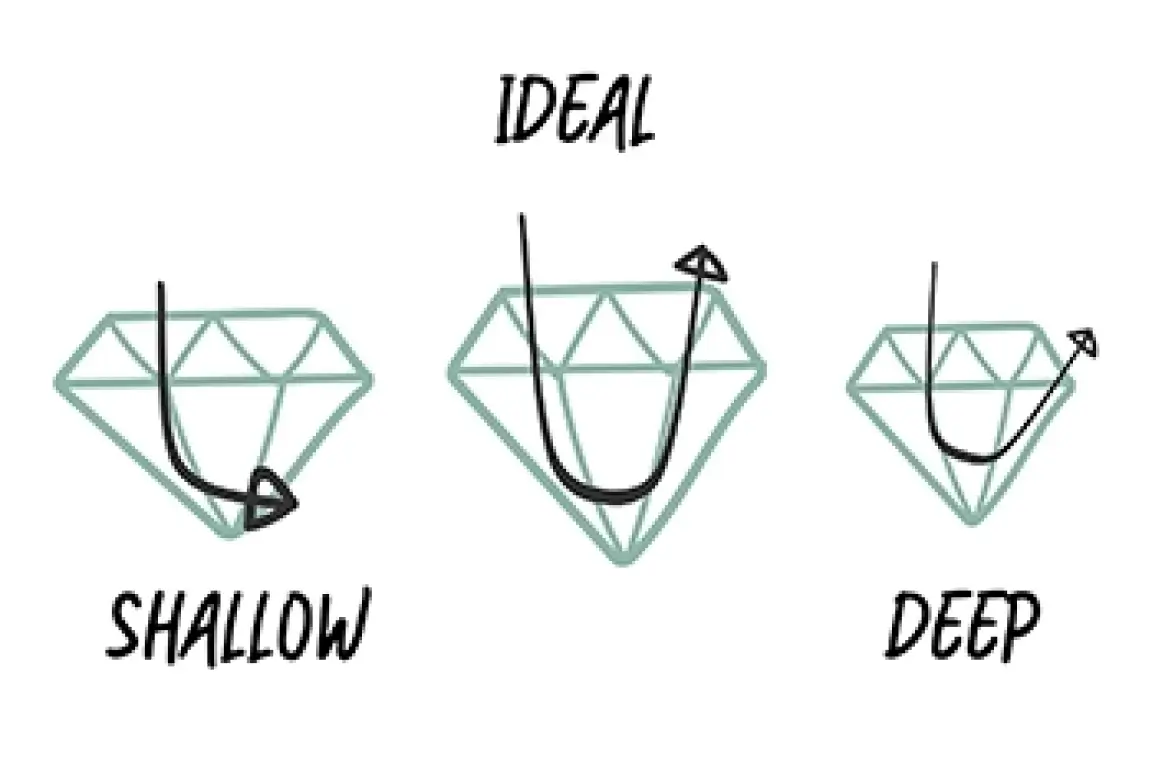
know more about cut
It’s all about putting in the right amount of effort, having an eye for detail, and utilizing experience from past years to obtain a splendid cut. The end product is an aesthetically appealing stone that is worthy of being mounted on a ring of choice.
Diamond Fact: The diamond’s cut is often thought of as its shape. While the shape and cut are related, they’re not the same. The cut refers to how the diamond reflects light. Hence, the better the cut, the better the diamond’s interaction with light.
Color
The second C stands for cjou should have an understanding of it when choosing your stone. You may think it refers to red, orange, and green colors. This, however, is not the case.
A diamond’s color is the lack of color present in the gem! Jewelers use a D to Z scale created by the International Gemological Institute (IGI) to color grade lab diamonds. Think of it as D - E - F - G till you reach the letter Z.
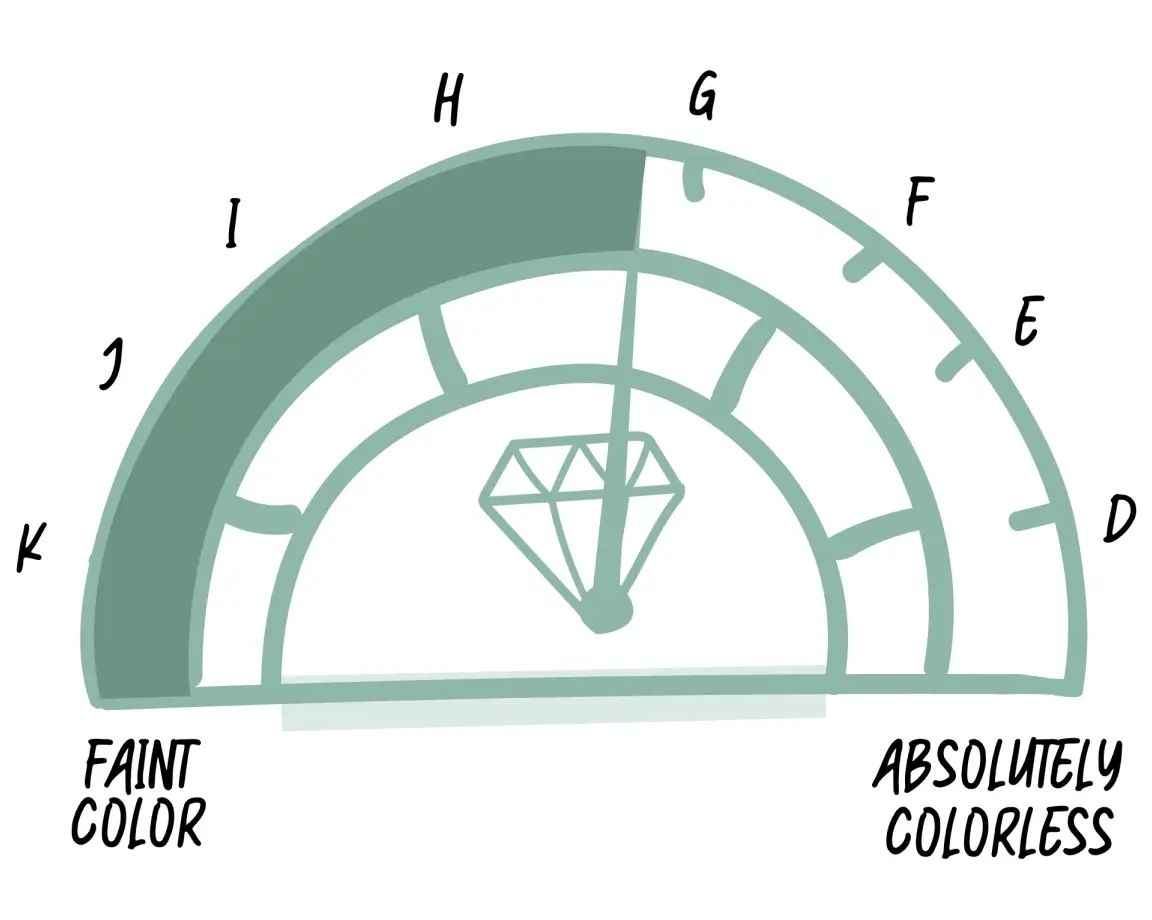
know more about color
D - E - F are colorless gems.
G - H - I - J are nearly colorless gems.
K - L are faint colored gems.
N - R are gems that have a noticeable colored tint.
S - Z are gems with a recognizable colored tint.
Diamond Fact: Diamonds of darker radiant colors are known as fancy colored diamonds. Fancy-colored diamonds are not graded by the same metric and have a completely different color grading system.
Clarity
The third C stands for clarity. Lab created diamonds as well as natural stones may have blemishes and inclusions. Blemishes refer to marks on the exterior of the stone and inclusions refer to marks within the stone. Diamond graders must assess these inclusions and blemishes to rate the clarity of the gem. Assessing these factors depends on the quantity, size, and position of the variables mentioned. The graders use a 10x magnifying glass to assess and rate the clarity of the gem. The diamond clarity scale is further divided into six parts.
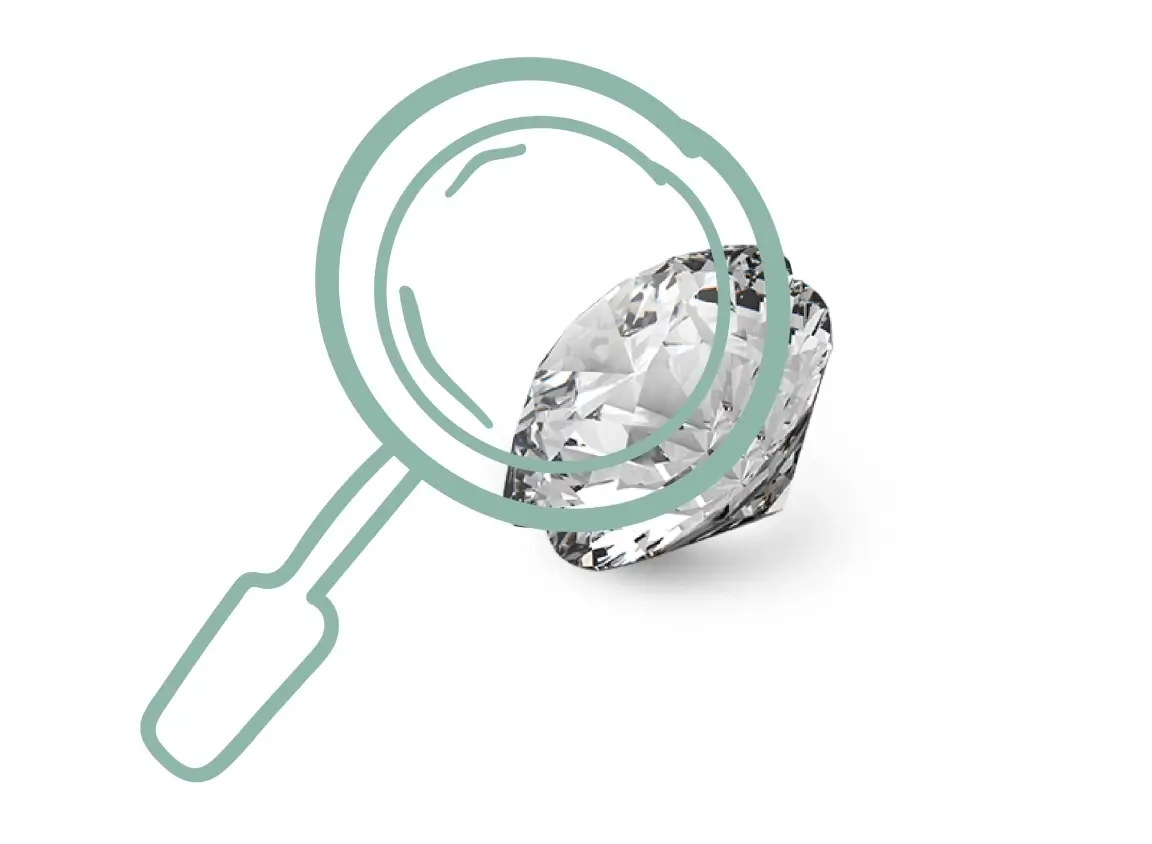
explore clarity
a) Flawless (FL)
FL diamonds are gemstones that don’t have inclusions or blemishes. These diamonds are of the rarest kind and have a clarity grade of the highest quality.
b) Internally Flawless (IF)
IF stones do not have visible inclusions. With Flawless diamonds at the top of the diamond clarity grade, IF stones come in second after FL stones.
c) Very, Very Slightly Included (VVS1 and VVS2)
VVS1 and VVS2 diamonds have hard-to-see slight inclusions. Considered diamonds of superb quality, the minute inclusions are so tiny that it’s tough to find them even under the 10x magnifying glass..
d) Very Slightly Included (VS1 and VS2)
VS1 and VS2 have minor inclusions visible only with an added effort from the grader. They are considered stones of fine quality even though they aren’t flawless.
e) Slightly Included (SL1 and SL2)
SL1 and SL2 diamonds have minor visible inclusions. The inclusions are visible only with the magnifying lens and may or may not be seen with the naked eye.
f) Included (I1,I2 & I3)
I1, I2 & I3 have inclusions that are visible to the naked eye and can affect a diamond’s transparency and brilliance.
Carat
Carat refers to the weight of the diamond. One metric carat equals 200 mg. A total of 100 cents equals one carat. Diamond weights below one carat are referred to by their cents alone. A 0.50 cents diamond can also be referred to as half a carat.
If the diamond weight is more than a carat, then both the carats and cents should be mentioned. A 1.05 cents diamond is referred to as 1 carat 5 cents. The more the carat weight, the costlier the gem but you can choose a diamond that is slightly below the whole carat weight to obtain a less expensive stone. For example, choose a 0.99 carat stone over a one carat diamond to save money on your diamond buy. The 0.99 carat stone shall be cheaper and sized similarly to a 1 carat stone.

know more about carat
Now that you’re familiar with the four C’s to assess the diamond’s quality, we will introduce you to a Friendly Diamond ‘C’ that you should consider when shopping for diamond engagement rings.
The ‘C’ Of Conscious
Yes! The C we talk of is related to being conscious and aware of your purchase. Diamond mining has a negative impact on the planet. It affects the natural resources such as soil, water, and air located around diamond mines across the world. The mining process leads to soil removal and depletion of natural resources. It also changes the landscape affecting the flora and fauna. When mine sites expand they also intrude into the natural habitats where wildlife populations are affected.
Diamond mining procedures also lead to greenhouse gasses produced from energy sources when mining gemstones. Fuel sources like diesel and energy sources like electricity and hydrocarbons release toxic chemicals into the air. The chemicals released can lead to smog, changes in climate conditions, and other environmental dangers that are perhaps still to be discovered.
Eco-friendly lab diamonds, on the other hand, are created in a controlled environment without the hassle of creating havoc on the planet. They are manufactured by creating the exact conditions that go into the creation of a mined stone making them the perfect option when choosing your gem.
We’d like to conclude with a thought shared by the great philosophical writer James Allen who once said during his lifetime that “nature gives all without reservation”. We’d like to add to it by stating that when the earth gives us its all, it is our responsibility to protect it, safeguard it, and conserve it not only for ourselves but also for generations to come. Hence, we must make a conscious choice to go green today, tomorrow, and for evermore!
If you are looking for rings set with high-quality graded eco-friendly diamonds, feel free to book a virtual meeting with us. Our customer service team would happily guide you through the intricacies of your diamond ring selection. And you can also avail yourself of free shipping if you shop with us.
